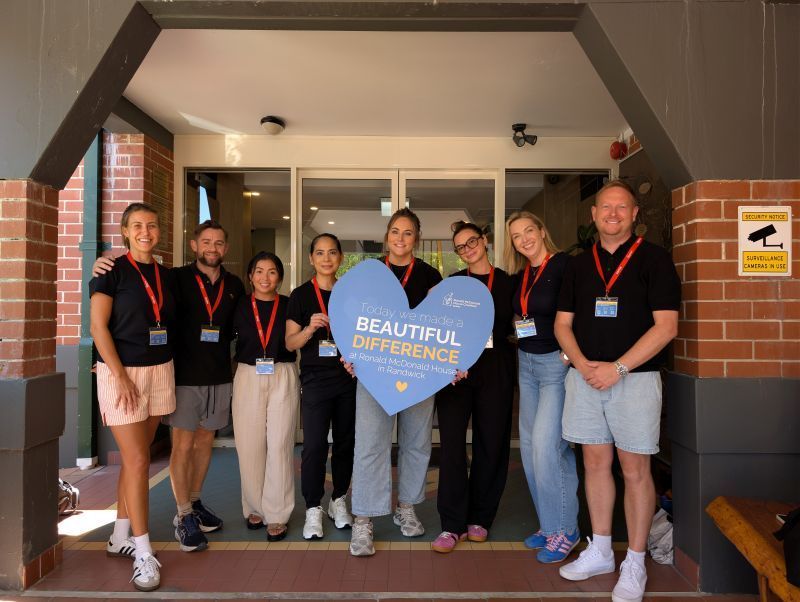When systems of work come crashing down
A man who sustained a severe crush injury to his leg during a work accident at BlueScope Steel (AIS) Pty Ltd’s Port Kembla steelworks, has been awarded over $2.2m in damages as against the major contractor and subcontractor for upgrade works carried out at the steelworks, with the Supreme Court of New South Wales finding no negligence on the part of the employer.
Background
In March 2009, BlueScope Steel (AIS) Pty Ltd (BlueScope) was carrying out an upgrade of its ore preparation facilities and trialling a new sinter cooler plant. Part of the upgrade required the sinter cooler to be dismantled from the test area and moved to its permanent location. The relocation was a massive operation, given the sheer size of each of the components of the sinter. Transfield Services Engineering Group Pty Ltd (Transfield) was the major contractor for the work. Transfield in turn subcontracted the work of dismantling and relocating the sinter cooler to Thomas & Coffey Limited (T&C). Each component of the sinter cooler needed to be lifted by crane. Transfield subcontracted the crane work to a company related to Allstate Labour Hire Pty Ltd (now deregistered) and Allstate provided the labour for that part of the work, being a supervisor, a crane operator and two dogmen. David Wormleaton obtained employment with Allstate on 10 March 2009 and was working as one of the dogmen on 30 March 2009.
The substructure of the sinter cooler consisted of four large steel frames bolted together, which were 8.1 m long, 2.5 m high and each weighing 1.7 tonnes. The removal and lifting of the frames was complex and required a particular procedure and system of work to be followed. It required that each frame be rigged to the crane so that the crane was taking the weight, prior to the securing nuts and bolts being loosened and released and the frame being lifted and moved.
T&C were in charge of the dismantling work. The instructions included the requirement for the T&C fitters, Mr Zappia and Mr Kerr to loosen or remove the securing nuts on the hold down bolts only after the frame had been securely rigged to the crane. Mr Zappia and Mr Kerr were not at an earlier site meeting in which these instructions were discussed.
At approximately 2 pm on 30 March 2009, two of the frames were being removed. At the same time, Mr Zappia and Mr Kerr loosened and removed the hold down nuts on the other two frames, but did so before the frame was rigged to the crane. Mr Neves, a rigger employed by T&C jumped onto the frame to sling the chain, ready for it to be rigged to the crane. Mr Wormleaton stepped up on to the beam and the other dogmen stepped on the other end of the beam. Immediately the beam started to fall. Mr Wormleaton stepped back off the beam, fell onto his back and the beam came crashing down onto Mr Wormleaton’s right leg. The frame was then lifted off Mr Wormleaton by crane and he was taken by ambulance to Wollongong Hospital, where he underwent emergency surgery to attempt to save his right leg. He was transferred to St George Hospital and underwent further surgery, which was ultimately unsuccessful. On 3 April 2009 Mr Wormleaton’s right leg was amputated below the knee.
Court proceedings
Mr Wormleaton commenced proceedings in the Supreme Court of New South Wales in negligence and claimed damages as against Transfield, T&C and Allstate. At the commencement of the trial, Transfield and T&C admitted liability and Allstate continued to dispute its liability.
Findings
Although Transfield and T&C admitted breach of duty of care, his Honour Campbell J noted that consideration of the basis of their liability, pursuant to the Civil Liability Act 2002 (NSW) was still necessary for the determination of apportionment and contribution.
Liability
His Honour noted that as the principle contractor, Transfield owed Mr Wormleaton a duty of care and it was necessary for Transfield to retain and exercise a supervisory power over the works and the shared responsibility of T&C and Allstate. Campbell J found that the risk of harm was foreseeable and not insignificant and that a reasonable person in the position of Transfield would have taken relevant precautions against the risk, by implementing and adhering to a safe system that required the frames to be rigged to the crane before the securing bolts were loosened or removed, to avoid the risk of harm. Such a precaution was not burdensome to Transfield and simply required Transfield to provide supervision and control by checking the safe work method statements, coordinating the activities and “keeping an eye on who was doing what when”. Transfield was negligent in failing to direct the work and coordinate the activities so that the safe system of work was in fact implemented.
His Honour noted that T&C was under the direction of Transfield and was the main subcontractor undertaking the task of disassembling the sinter cooler. T&C were in charge of the work being done. The relevant risk of harm was the risk of personal injury to the workers involved in the removal of the heavy steel components. Campbell J found that T&C failed to take reasonable precautions against that risk by failing to institute and maintain a safe system of work. Specifically, T&C failed to maintain the system and instruct Mr Zappia and Mr Kerr that the securing nuts and bolts were to be loosened and removed only after the frame had been rigged to the crane.
The Allstate crew, including Mr Wormleaton had a limited obligation of rigging and lifting the components. Campbell J found that the steelworks and the system of work were not under Allstate’s control; Allstate had the control of the actual lift of the components by the crane but it had no control over the disassembly or over T&C employees, and no power to coordinate the activities of T&C. His Honour found that the risk that materialised was beyond the scope of the employer/employee relationship and no liability attached to Allstate.
It was argued that Mr Wormleaton was contributorily negligent in failing to observe that a safety harness rigged to the top beam had been removed, and in failing to undertake a proper inspection of the beams and check that the securing nuts and bolts remained fastened. Campbell J found that a reasonable person in Mr Wormleaton’s position, exercising reasonable care for his own safety, would not have checked whether the securing nuts had been loosened as he had no reason to suspect that Mr Zappia and Mr Kerr would not have follow the system of work and would have loosened the nuts. In other words “the touchstone of reasonableness does not require one tradesman to check that another tradesman is following this system”. His Honour found no contributory negligence on the part of Mr Wormleaton.
Quantum
Surgical repair of the crush injury was unsuccessful and Mr Wormleaton’s right leg was amputated below the knee. Quantum was contested at trial, in particular past and future economic loss and loss of capacity to provide domestic services. Due to very serious pre-accident circumstances, Mr Wormleaton had been out of the work force for some years until he obtained the job with Allstate on 10 March 2009. On 21 January 2004 Mr Wormleaton, his wife and his daughter were victims of a violent home invasion, in which Mr Wormleaton was attacked with a machete and his wife and daughter were sexually assaulted while Mr Wormleaton was forced to watch. Mr Wormleaton suffered a fracture of his left arm and severing of the ulna nerve, which was surgically repaired. He also suffered post traumatic stress disorder, which led to serious illicit drug use and suicide attempts. Mr Wormleaton had been unable to work since January 2004 due to the physical and psychological injuries suffered as a result of the home invasion.
His Honour found that by March 2009 Mr Wormleaton’s injuries sustained in the home invasion had improved and he was able to perform work as a dogman rigger with Allstate and that he was fully fit for that type of work on a full-time basis. In considering future economic loss, his Honour found that while in theory Mr Wormleaton could perform light, sedentary clerical work, it was extremely unlikely and not realistic that Mr Wormleaton could have, or will ever be able to get back into useful work.
Mr Wormleaton has a disabled son who suffers from spastic quadriplegic cerebral palsy with a mild intellectual disability. Prior to the work accident in March 2009, Mr Wormleaton was very involved in activities with his son, such as camping, boating, fishing and walking the dog together. Campbell J found that the type of avocational services that Mr Wormleaton provided to his son are gratuitous domestic services within the meaning of s 15B of the Act, and satisfied the necessary thresholds, and that he has lost the capacity to engage in and provide gratuitous domestic services to his son.
Accordingly, his Honour Campbell J found in favour of Mr Wormleaton as against Transfield and T&C and awarded damages in the total sum of $2,286,832: Wormleaton v Thomas and Coffey Limited (No 4) [2015] NSWSC 260.
“This article originally appeared on CCH Australia and is reproduced with permission”






